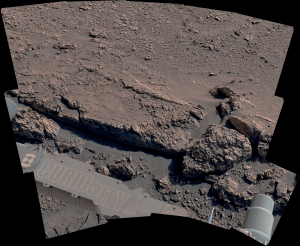Cassini Significant Event Report
For Week Ending 11/19/99
The most recent spacecraft telemetry data was acquired from the Canberra
tracking station on Tuesday, 11/16. The Cassini spacecraft is in an
excellent state of health and is operating normally. The speed of the spacecraft can be viewed on the "Where is Cassini Now?" web page (http://saturn.jpl.nasa.gov/operations/present-position.cfm)
On November 13th, CDA (Cosmic Dust Analyzer) data was downlinked from the
spacecraft. This is the first opportunity for data collection since the
successful execution of a spacecraft roll that placed that instrument's
aperture into the ecliptic plane. The data will be examined for an
increased number of hits due to the new spacecraft orientation.
Outreach activities include presentations of a Cassini Mission Overview to
the American Nuclear Society and the American Indian Science and
Engineering Society.
Mission Planning has received all science and spacecraft requests for
activities to execute during Instrument Checkout #2. This activity occurs
during May through November of 2000.
The Spacecraft Office delivered the Inertial Vector Propagator and
Kinematic Predictor (IVP/KPT) tools to the Operations Net. The major new
capability in these tools is the ability to orient the spacecraft to point
to an arbitrary body. This will enable the targeting of the asteroid
Masursky in January as part of the C18 sequence.
The Instrument Operations Team hosted a training workshop for the SPICE and
NAIF Tool Kit (Spacecraft, Planet, Instruments, C-matrix and events
kernals, and Navigation Ancillary Information Facility) for Facility
Instrument and Remote Site personnel. This tool kit will be used for Tour
development over the coming months.
Additional information about Cassini-Huygens is online at http://saturn.jpl.nasa.gov.
Cassini will begin orbiting Saturn on July 1, 2004, and release its piggybacked Huygens probe about six months later for descent through the thick atmosphere of the moon Titan. Cassini-Huygens is a cooperative mission of NASA, the European Space Agency and the Italian Space Agency. JPL, a division of the California Institute of Technology in Pasadena, manages the mission for NASA's Office of Space Science, Washington, D.C.
Media Relations Office
Jet Propulsion Laboratory
California Institute of
Technology
National Aeronautics and Space
Administration
Pasadena, Calif. 91109.
Telephone (818) 354-5011






























